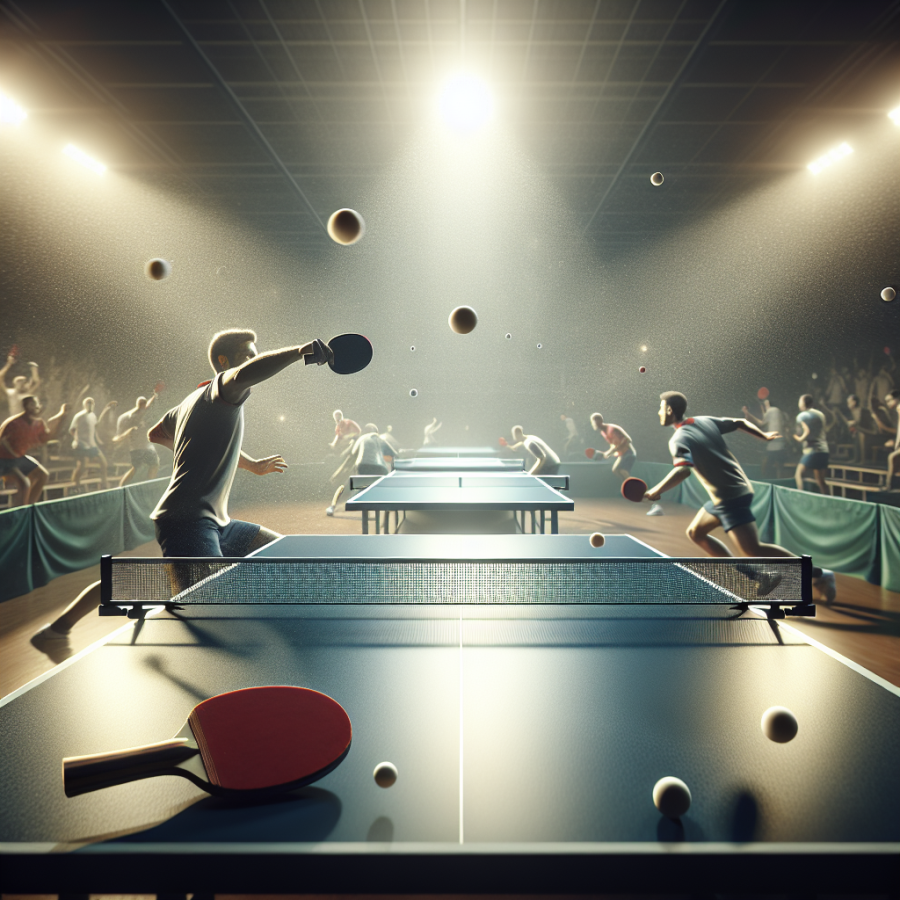Understanding the Intricacies: Techniques and Strategies in Table Tennis
Table tennis, also known as ping pong, is much more complex than it looks. It involves an understanding of different strokes, spins, In-depth strategies, and varying techniques. This always keeps your opponents guess what's coming next. It is not just a game of hitting the ball back and forth; it is a game of intense tactics and techniques. These factors play a significant role in winning the game.
Understanding the sport's intricate details will help improve your game and transform you from a novice player into an adept player. For example, using different spins can drastically alter the ball's trajectory after it bounces on your opponent's side. Such tricks are what make a competitive table tennis match interesting and unpredictable.
You should understand that each spin has its own benefits and weaknesses. A topspin, for instance, is great for speed, but it might be predictable once your opponent figures out your strategy. A backspin, on the other hand, may seem slower, but it's more difficult to return. It could help you to take your opponent by surprise, bringing you closer to the winning point.
Chop and loop are two other commonly used table tennis techniques that are loved by players worldwide. The chop is a tricky technique to counter because it consists of a heavy backspin, making the ball travel in an irregular path. The loop involves a powerful topspin that propels the ball over the net in a massive arc.
Another notable aspect that every table tennis player must pay attention to is the grip. Having the correct grip is crucial because it determines the kind of shots you will be able to play. The popular grips in table tennis are the shakehand grip and the penhold grip. Each has its own advantages and limitations. The shakehand grip is well known for the powerful shots it can deliver, while the penhold grip is known for providing exceptional control over the ball.
Understanding the service in the game is also a key aspect. The art of serving is often one of the toughest skills to master in table tennis, but it's an area where games can be won and lost. The variety of the serves varies greatly. It can be short, long, with topspin, sidespin, backspin or without spin. The decision on what kind of serving to do at any given time during a match adds another layer of strategy to the game.
Footwork is just as consequential as understanding spins, grips and serves.
The Essential Elements that Impact Performance in Table Tennis
In mastering the game of table tennis, players should pay attention to several essential elements that have a significant impact on their performance. These elements include equipment, player skill, techniques and strategies, physical and mental condition, and environmental factors.
1. Equipment
One major factor affecting performance in table tennis is the quality of the equipment a player utilizes. This includes the table, the balls, and the racket. Rackets can vary significantly in terms of their handle design, blade composition, and rubber type which can influence spin, speed, and control of play. The variation in balls design can also affect the game, as they differ in terms of size, weight, and bounce.
2. Player Skill
Player skill constitutes a fundamental element in impacting performance. It is quite common to see highly skilled players place the ball accurately, a feat that is central to winning the game. These skills are usually developed from consistent practice sessions and some formal training. It becomes quintessential to understand the various strike techniques; topspin, backspin, side-spin and no spin and how to handle them.
3.productive Techniques and Strategies
Conceiving effective techniques and strategies when playing table tennis is markedly vital. It's more than just striking the ball; it's about deciding on the optimal moment to execute a certain stroke or positioning oneself to mitigate attack from your opponent. This involves getting well-versed with the strategies of offensive play, defensive play, and mixed play and deploy appropriately.
4. Physical and Mental Condition
A player's physical and mental state plays a crucial role in determining their performance in table tennis. On a physical level, players need to be at the peak of their condition, with good stamina, quick reflexes, dexterity, and agility. Practice sessions not only improve your technique but your physical strength as well. On the mental level, players need be able to manage stress, stay focused, and remain confident throughout the game, regardless of whether they are winning or losing.
5. Environmental Factors
Environmental factors can also make a significant impact on a table tennis game. Playing conditions such as room temperature, humidity, and lighting can sway the performance. For instance, a well-lighted environment facilitates better vision during play, while high humidity can affect ball movement.
In conclusion, mastering the game of table tennis involves a comprehensive understanding and improvements in various factors. Investing time and efforts in each one of these elements will certainly put you on the path to becoming a table tennis maestro.




